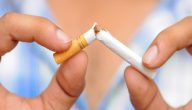حلول التدخين بالانجليزي وماهي اسهل الوسائل للتغلب على التدخين نهائياً من خلال هذه المقالة.
محتويات المقال
Smoking
It is a process in which a substance is burned, which is often tobacco, and then the smoke is tasted or inhaled. This process is carried out primarily as an exercise for recreation through the use of drugs, as it comes from the combustion of the active substance in the drug, such as nicotine, making it available for absorption through the lung. There are thousands of chemicals that affect the central nervous system and cigarettes are the most common means. Popular for smoking today, whether the cigarette is industrially produced or hand-rolled from loose tobacco and cigarette rolling paper. There are other means of smoking are pipes, cigars, hookahs, and bungee “water pipe”.
smoking hazards
Smoking has become a general global problem that causes negative effects in various fields: health, psychological, economic, social, and civilization … as this epidemic kills more than five million people annually, and regardless of the different forms of smoking or the age of smokers, it affects different body systems and leads to addiction.
Smoking leads to many diseases and health crises such as heart attack, stroke, respiratory diseases, and cancer (lung cancer in particular) in addition to other health problems and thus premature death. In addition, the symptoms that result from infection with one of the diseases resulting from smoking lead to increased nervous and psychological pressure and thus negatively affect the quality of life from an early age.
Second-hand smoke is the act of inhaling tobacco smoke from smokers. If you decide to continue smoking, you are exposing your family and friends to developing multiple types of cancer in addition to heart and lung disease. Smoking also affects children and exposes them to diseases such as ear cirrhosis and asthma. It is worth noting here that children of smokers are 3 times more likely than children of non-smokers to become addicted to smoking in the future. The following are the disadvantages of smoking for smokers of all ages, and the social harms of people’s aversion to smokers. Teaching children to smoke.
The harmful effects of smoking on women mothers and pregnant women
It increases the risk of heart disease and cancers, especially breast cancer.
It increases the risk of miscarriage, haemorrhage, placenta previa, premature labor and preeclampsia.
It leads to a decrease in the weight of the fetus.
It changes the tone of the voice, increases facial wrinkles, and affects the freshness of the face.
Bad odors emanating from the mouth and clothes.
It increases the possibility of osteoporosis.
Affects the regularity of the menstrual cycle and the fertility of a woman.
Studies have shown that smoking causes a pregnant woman to change the DNA in thousands of locations, which means that there is a high potential for abnormalities.
Smoking harms the elderly
It is addictive. It leads to cancers of the mouth, lung, esophagus and stomach. It leads to heart disease, hardening of the arteries, and heart attacks. It increases the prevalence of tuberculosis when hookah users. It leads to respiratory diseases such as chronic bronchitis, asthma, tuberculosis, and obstruction of the airways, knowing that 75 – 80% of people with emphysema are smokers. Inherited anxiety, tension, nervousness, fatigue and exhaustion.
Smoking solutions
1. Try NRT
Ask your doctor about NRT. The options include the following:
Prescription nicotine in a nasal spray or spray
Nicotine is available over the counter as patches, gum, or lozenges
Prescription nicotine-free drugs to quit smoking such as bupropion (Zyban) and varenicline (Chantex)
Short-acting types of NRTs — such as nicotine gum, lozenges, nasal sprays, or sprays — can help you beat a craving. Short-acting treatments are safe to use with long-acting nicotine patches or with a non-nicotine medication.
Electronic cigarettes (personal vaporizers) have recently received a lot of attention as an alternative to smoking traditional cigarettes. Nevertheless, more studies are needed to determine the effectiveness of electronic cigarettes for smoking cessation and the safety of using such devices in the long term.
2. Avoid triggers
The urgency to smoke tobacco is likely to be greatest in situations where you have smoked or chewed tobacco most often, such as parties and drinking bars, or when you are under psychological stress or when you drink coffee. Identify exciting situations and create an appropriate plan to avoid them completely or deal with them successfully without using tobacco.
Don’t push yourself to relapse. If you used to smoke when talking on the phone, for example, keep a pen and paper near you to distract yourself with fiddling drawing instead of smoking.
3. Delay
If you feel that you are about to give in to your craving for tobacco, tell yourself that you must wait an additional 10 minutes. Then do something to distract yourself during that time period. Try to go to a non-smoking public area. These simple tricks may be enough to delay your craving for tobacco.
4. Chew something
Give your mouth something to chew, so you can combat tobacco craving. Chew sugarless gum or hard candy, or munch raw carrot, celery, nuts, or sunflower seeds – anything crunchy and filling.
5. Don’t just stick with “one”
You may be tempted to smoke just one to satisfy your tobacco craving. But don’t fool yourself into believing you can stop there. Oftentimes, smoking one cigarette leads to a second – and it can lead you to start smoking again.
6. Be physically active
Physical activities can help distract you from and reduce cravings for tobacco. Yum










